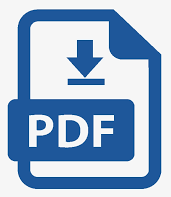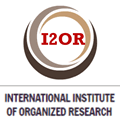Tratamiento del cáncer: la revolución del anticuerpo a la modificación genética ex vivo de linfocitos T
Resumen
Palabras clave
Referencias
Cheson Bruce D, Ansell S, Schwartz L, Gordon Leon I, Advani R, Jacense HA, Hoos A, et all.Refinement of the Lugano classification lymphoma response criteria in the era of immunomodulatory therapy. Blood. 2016 Nov;128(21):2489-96. Doi.org/10.1182/blood-2016-05-718528.
Bianchini G, Gianni L. The immune system and response to HER2 targeted treatment in breast cancer. Lancet Oncol. 2014 Feb;15(2):e5868. Doi: 10.1016/S1470-2045(13)70477-7.
Meyer S, Leusen JH, Boross P. Regulation of complement and modulation of its activity in monoclonal antibody therapy of cancer. MAbs. 2014 Oct;6(5):1133-44. Doi: 10.4161/mabs.29670.
Espinosa EE, Rodríguez LG, Izquierdo L, Cabrera D, Hernández C, Espinosa E. Rituximab: historia, farmacología y perspectivas. Rev Cubana Hematol Inmunología Hemoter [Internet]. 2010 [citado 8 Ene 2017];26(1): [aprox. 12p.]. Disponible en: http://scieloprueba.sld.cu/scielo.php?script=sci_arttext&pid=S0864-02892010000300002&lng=es
Ayed AO, Chang LJ, Moreb JS. Immunotherapy for multiple myeloma: current status and future directions. Crit Rev Oncol Hematol. 2015 Dic;96(3): 399-412. Doi: 10.1016/j.critrevonc.2015.06.006.
Wolchok JD, Chan TA. Cancer: antitumour immunity gets a boost. Nature. 2014 Nov;515(1528):496-8. Doi: 10.1038/515496a.
Garfall AL, Maus MV, Hwang W-T, Lacey SF, Mahnke YD, Melenhorst JJ,et al.Chimeric antigen receptor T cells against CD19 for multiple myeloma. N Engl J Med. 2015 Sep;373: 1040-47.Doi: 10.1056/NEJMoa1504542.
Chekmasova AA, Horton HM, Garrett TE, et al. A novel and highly potent CAR T cell drug product for treatment of BCMA-expressing hematological malignances. Blood [Internet]. 2015 [citado 15 Ene 2017];126:3094. Disponible en: http://www.bloodjournal.org/content/126/23/3094?sso-checked=true
Chmielewski M, Hombach AA, Abken H. Antigen-specific T-cell activation independently of the MHC: chimeric antigen receptor-redirected T cells. Front Immunol. 2013 Nov; 4:371. Doi: 10.3389/fimmu.2013.00371.
Cieri N, Mastaglio S, Oliveira G, Casucci M, Bondanza A, Bonini C. Adoptive immunotherapy with genetically modified lymphocytes in allogeneic stem cell transplantation. Immunol Rev. 2014 Ene; 257(1):165-80. Doi: 10.1111/imr.12130.
Gill S, June CH. Going viral: chimeric antigen receptor T-cell therapy for hematological malignancies. Immunol Rev. 2015 Ene;263(1):68-89. Doi: 10.1111/imr.12243.
Maude SL, Frey N, Shaw PA, Aplenc R, Barrett DM, Bunin NJ, et al. Chimeric antigen receptor T cells for sustained remissions in leukemia. N Engl J Med [Internet]. 2014 [citado 15 Ene 2017];371:1507-17. Disponible en: http://www.nejm.org/doi/full/10.1056/NEJMoa1407222#t=article
Brentjens RJ, Davila ML, Riviere I, Park J, Wang X, Cowell LG, et al. CD19-targeted T cells rapidly induce molecular remissions in adults with chemotherapy-refractory acute lymphoblastic leukemia. Sci Transl Med. 2013 Mar;5(177):177ra38. Doi: 10.1126/scitranslmed.3005930.
Lee DW, Kochenderfer JN, Stetler-Stevenson M, Cui YK, Delbrook C, Feldman SA, et al. T cells expressing CD19 chimeric antigen receptors for acute lymphoblastic leukaemia in children and young adults: a phase 1 dose escalation trial. Lancet. 2015 Feb;385(9967):517-28. Doi: 10.1016/S0140-6736.
Stroncek D, Melief C, Castiello L, Cesano A, Cheever M, Civini S, et al. Highlights of the Society for Immunotherapy of Cancer (SITC). 27th Annual Meeting. J Immunother Cancer. 2013 May;1:4. Doi:10.1186/2051-1426-1-4.
Leone P, Shin EC, Perosa F, Vacca A, Dammacco F, Racanelli V. MHC class I antigen processing and presenting machinery: organization, function, and defects in tumor cells. J Natl Cancer Inst. 2013 Ago;105(16):1172-87. Doi: 10.1093/jnci/djt184.
Tel J, Aarntzen EH, Baba T, Schreibelt G, Schulte BM, Benítez-Ribas D, et al. Natural human plasmacytoid dendritic cells induce antigen-specific T-cell responses in melanoma patients. Cancer Res. 2013 Feb;73(3):1063-75. Doi: 10.1158/0008-5472.CAN-12-2583.
Burrell RA, McGranahan N, Bartek J, Swanton C. The causes and consequences of genetic heterogeneity in cancer evolution. Nature. 2013 Sep;501(7467):338-45. Doi: 10.1038/nature12625.
Mahnke YD, Brodie TM, Sallusto F, Roederer M, Lugli E. The who’s who of T-cell differentiation: human memory T-cell subsets. Eur J Immunol. 2013 Nov;43(11):2797-809. Doi: 10.1002/eji.201343751.
Yee C. The use of endogenous T cells for adoptive transfer. Immunol Rev. 2014 Ene;257(1):250-63. Doi: 10.1111/imr.12134.
Tran E, Turcotte S, Gros A, Robbins PF, Lu YC, Dudley ME, et al. Cancer immunotherapy based on mutation-specific CD4+ T cells in a patient with epithelial cancer. Science. 2014 May;344(6184):641-5. Doi: 10.1126/science.1251102.
Aporta A, Catalán E, Galán-Malo P, Ramírez-Labrada A, Pérez M, Azaceta G, et al. Granulysin induces apoptotic cell death and cleavage of the autophagy regulator Atg5 in human hematological tumors. Biochem Pharmacol. 2014 Feb;87(3):410-23. Doi: 10.1016/j.bcp.2013.11.004.
Roschewski M, Staudt LM, Wilson WH. Diffuse large B-cell lymphoma-treatment approaches in the molecular era. Nat Rev Clin Oncol. 2014 Ene;11(1):12-23. Doi: 10.1038/nrclinonc.2013.197.
Intlekofer AM, Younes A. Precision therapy for lymphoma–current state and future directions. Nat Rev Clin Oncol. 2014 Oct;11(10):585-96. Doi: 10.1038/nrclinonc.2014.137.
Dalia S, Shao H, Sagatys E, Cualing H, Sokol L. Dendritic cell and histiocytic neoplasms: biology, diagnosis, and treatment. Cancer Control. 2014 Oct;21(4):290-300. Doi: 10.1177/107327481402100405.
Go H, Jeon YK, Huh J, Choi SJ, Choi YD, Cha HJ, et al. Frequent detection of BRAF(V600E) mutations in histiocytic and dendritic cell neoplasms. Histopathology. 2014 Ago;65(2):261-272. Doi: 10.1111/his.12416.
Wenlong Zhang. CART-cell therapy: opportunities and challenges. Inmunotherapy [Internet]. 2016 [citado 15 Ene 2017];8(3):[aprox. 3p.]. Disponible en: https://www.futuremedicine.com/doi/abs/10.2217/imt.15.129
Dosani T, Carlsten M, Maric I, Landgren O. The cellular immune system in myelomagenesis: NK cells and T cells in the development of myeloma and their uses in immunotherapies. Blood Cancer J. 2015 Abr;5:e306. Doi: 10.1038/bcj.2015.32.
Wihilding LM, Mater J. ErbB-targeted CAR-T cell immunotherapy of cancer. Immunotherapy. 2015;7(3):229-241. Doi: 10.2217/imt.14.120.
Mayor M, Zeltsman M, McGee E, Adusumilli P. A regional approach for CAR T cell therapy for mesothelioma: from mouse models to clinical trial. Inmunotherapy [Internet]. 2016 May [citado 15 Ene 2017];8(5):[aprox. 4p.]. Disponible en: https://www.futuremedicine.com/doi/abs/10.2217/imt-2016-0008
Enlaces refback
- No hay ningún enlace refback.
Copyright (c) 2018 Dumeivy García Sánchez, Belkis L. Rodríguez Jorge, Juan Camilo Díaz Ceballos











 15 de abril de 2024
15 de abril de 2024


